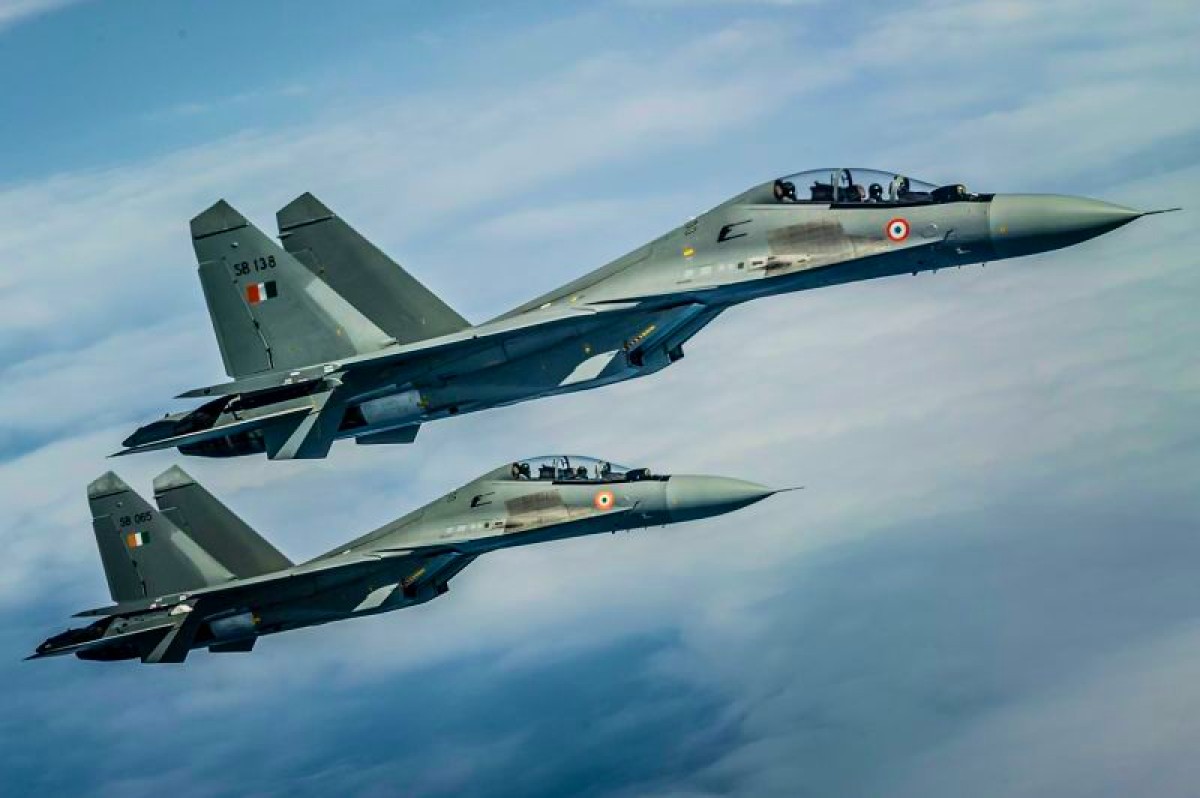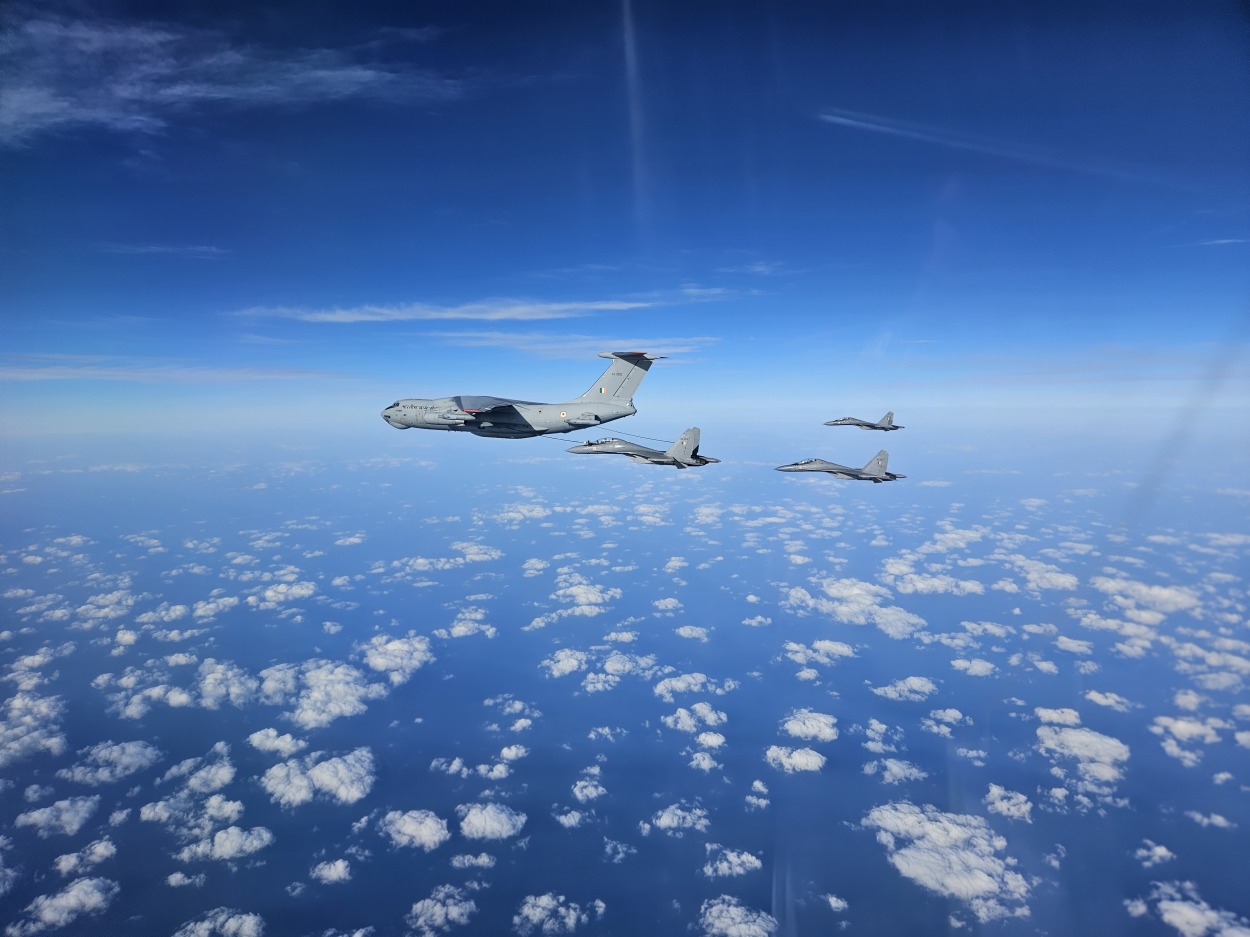Five years ago, Indian fighter jets crossed the border with Pakistan for the first time since the 1971 war to bomb the Jaish-e-Mohammed’s terror training camp. When the Pakistan Air Force, with better electronic warfare jammers, retaliated, the Indian Air Force (IAF) was found wanting an operational data link that restricted Indian Sukhois from communicating with its Mirages.
In an era of electronic warfare, it was the blind spot of the IAF. The IAF’s MiG-21 aviator Wing Commander Abhinandan, who was captured in Pakistan in the aftermath, could not hear the instructions given by the ground controller as he did to have the software-defined radio, which obviated the noise clutter.
The lack of software-defined radio impacted the IAF’s interoperability, as the electromagnetic spectrum played an important role in any war.
Wars are won or lost first in the electromagnetic spectrum. Although invisible, it is an essential physical foundation of every battlefield. It is a space where energy and information are exchanged instead of bullets and bombs. It enables any force to achieve asymmetric advantages against any adversary.
This critical gap in the IAF’s capability was highlighted as Pakistan’s fighter jets crossed the border. Reports at the time suggested that as the PAF had better electronic warfare jammers, they could disturb the communication between Indian fighter jets that were airborne at that time.
A source confirmed this to the EurAsian Times: “The IAF’s air-to-ground and ground-to-air network progressed well ahead of the peers. But the air-to-air network lagged. Neither we imported nor developed it indigenously.” The source refused to explicitly say how this would have impacted India’s response to Pakistan’s retaliatory strikes.
But in layman’s terms, it means that the flying radars could efficiently relay the situation to the ground stations, which in turn would pass on the information to fighter jets. However, communication between different fighter jets was not there.
ODLs facilitate secure and jam-resistance voice and data exchanges between connected assets. Within that framework, ODL enables networked parties to view each other’s sensor feed in near real-time. The feed could be from radars, sonars, and electro-optical (EO) systems such as cameras and others.
An actual instance would be a fighter aircraft utilizing the radar feed of an allying airborne early warning and control (AEW&C) aircraft to identify an enemy fighter that has intruded the airspace. The friendly fighter jets can easily correct course and counter the potential threat as they have access to the AEW&C’s feed.
While the capability gap was becoming chink in IAF’s armor, the PAF had operationalized an indigenously developed Link-17. The force claimed that it gave the PAF a network protocol that it can use for a wide range of aerial assets, especially indigenously manufactured JF-17 ‘Thunder.’ Because of the ODL, JF-17 can take advantage of the extended-range air surveillance coverage offered by the radars on board its AEW&C.
The then IAF chief, Air Chief Marshal R K S Bhadauria, had admitted to a defense magazine that the lack of operational data link hampered the IAF response on February 27. He said his point was, “If you do not win the war in the electromagnetic spectrum, you do not win the war at all.” This is why the US military designated the electromagnetic spectrum a war domain itself.
Admitting that lack of operational data-link (ODL) was one of the weaknesses that hampered the IAF’s response after PAF’s retaliation, Bhadauria said that the IAF intended to data link all its airborne platforms, including the fighters, helicopters, command and control aircraft as well as the transporters.
The lack of VHF/UHF-/L-band two-way tactical data links on board the IAF’s fleet of combat aircraft enabled the PAF to adopt swarm tactics when attacking a Brigade Support Depot at Narian in Jammu with standoff precision-guided munitions.
Over time, the IAF wants to have the entire range of secure horizontal and vertical networks connecting all aerial platforms as well as ground stations with airborne platforms, with the Integrated Air Command and Control System (IACCS) serving as the backbone. This would facilitate quicker decision-making in addition to improved situational awareness.
Plugging The Communication Gap
After Operation Swift Retort by the PAF, the IAF expedited the procurement of BNET Software Defined Radios (SDR) from Israel and integrated them with its aircraft fleets. The emergency purchase of SDRs was made from Israeli firm Rafael for its Mirage-2000, MiG-29, and Sukhoi-30 fighter jets of the IAF.

Astra Microwave Products Ltd, based in Hyderabad, and RAFAEL Advanced Defense Systems Ltd, based in Israel, have formed a joint venture company called Astra Rafael Comsys Pvt Ltd (ARC) to supply the BNET-AR SDRs to the IAF. ARC will handle the production, integration, customization, marketing, sale, life-cycle support, and other activities related to the operationalization of the BNET-AR SDRs.
The SDRs will ensure secure communication not just between fighters in the air but also between fighters in the air and on the ground, and, most importantly, between the fighters in the air and the AWACS. In the face of electronic jamming, communication can shift to another frequency, and the mission can go unhindered.
The SDR will provide secure data linking, which means that everyone will know where the others are, thus helping in better “combat control.” Two-way tactical data links (or Software-defined radios) are important for airborne battle management.
The IAF has been trying to induct the SDRs in the decade before Balakot strikes. But it fructified after Balakot. For the 83+97 Light Combat Aircraft (LCA) Mk1A that the IAF will be inducted, the force has specified RAFAEL of Israel’s BNET-AR SDR for installation. The 36 Dassault Rafale fighter jets the IAF inducted became its first combat jet to possess such tactical data links.
Another important development has been the IAF adopting indigenously-built Vayulink in 2023 which will help pilots deal with bad weather and provide them jammer-proof uninterrupted communication with the base station.
The “Vayulink” data link communication uses the Indian Regional Navigation Satellite System (IRNSS), also known as NAVIC, to send radio communication to the base station when the signals are low. The important aspect of the technological solution is that it prevents fratricide or friendly fire.
As PAF’s Operation Swift Retort was ensuing, enemy jets intruded into the air space while jamming the communication. In the chaos, an IAF’s Mi-17 was accidentally shot down in Budgam shortly after take-off from Srinagar. All six service personnel onboard and a civilian on the ground were killed.
A court of inquiry later confirmed that the chopper was shot by an Israeli-origin Spyder surface-to-air missile of the IAF.
Vayulink is meant to avoid such situations in the future.
IAF’s Evolution To A Network-Centric Force
“India’s evolving Theatre Level commands shall be highly relying upon the sensor information collected and processed for use and updates from high-speed fighter jets, Army Units, air defence radars and Naval assets like warships and submarines. These shall in future also integrate the space-based Indian assets,” Commander Milind Kulshreshtha (retired) told EurAsian Times while elaborating on the desired capabilities for the Indian forces.

The former Indian Navy officer is a Strategic Analyst with expertise in C4I systems. He undertook the ab initio design, development, and successful onboard deployment of the first indigenous Naval Combat Management systems (CMS) for modern Indian warships.
These sensors garner the information at milli-second rates to decipher the dynamically evolving threats. With the enemy also possessing the latest generation fast-speed fighter jets and other platforms involved in a battlefield, such threat perception and resource allocation process shall be highly reliant upon a low latency and high throughput data bi-directional link connectivity within the Air units and from Air to Ground and Naval units.
He further underscored what the Indian forces can aspire for. The time synchronization mechanism for the network(s) is one of the most critical components of any tactical data link being used by its own Aviation Units.
“It indicates the use of equipment like GPS, Ground-based, external clock sources (like rubidium clocks), clocks extracted from STM-16/ STM-4 Signals, routers, NTP servers, etc. General Atomics’ Mercury-ion atomic clock in space (for GPS and Deep Space communication improvement) is one of the recent synchronization equipment launched by the US and considered highly compatible for Space Command forces,” Kulshreshta added.
- Ritu Sharma has been a journalist for over a decade, writing on defense, foreign affairs, and nuclear technology.
- The author can be reached at ritu.sharma (at) mail.com
- Follow EurAsian Times on Google News




